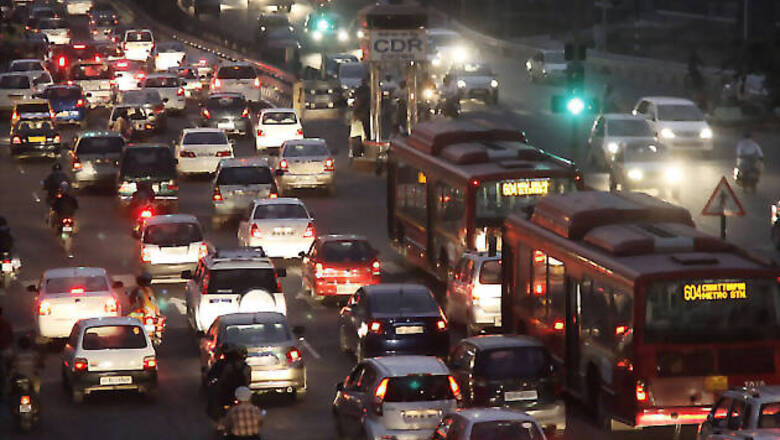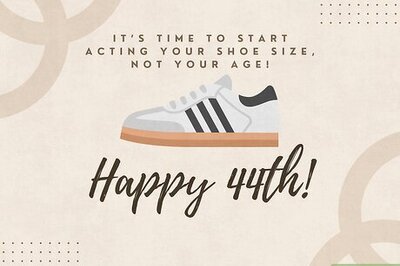
views
Gopinath Munde died in a tragic road accident in New Delhi on Tuesday morning. The news got widely reported and talked about in the country as he was a recently sworn in Rural Development Minister and a Union Cabinet Minister.
However, few are aware that out of every ten road accidents in Delhi, three entail fatalities. This case lies amongst those three cases. The Delhi Traffic Police tried to lower the death toll in road accidents by trying various scientific methods. Even then, the fatalities remain higher than the metropolitans.
Surprisingly in 2011, Mumbai roads saw 25,471 accidents out of which only 563 people in these accidents succumbed to injuries. In Delhi, the number of accidents was reportedly far lower than that of Mumbai i.e. 7,281 but 2,065 people died in these road accidents.
Having a close look at the figures can raise various questions. Are Delhi people usually careless? Are the rules not being implemented enough to create a fear amongst the people?
Recently in the end of May, the family of a 25-year-old, who got rammed by a rash truck, got a compensation of Rs 30 lakh. The man was on a bike and the accident took place on the outer ring road near Civil Lines.
Reasons for deaths in accident are the same tardy ones we have been hearing since ages. Not wearing seat belts and helmets, drunk driving, rash driving, speeding vehicles and jumping red signals are amongst the most popular ones.
"Good roads lead to high speeding and easy drunk driving and thus lead to deaths in accidents," said a transport ministry official. It is difficult to decide if the good roads in Delhi are to be appreciated or cursed for the number of lives they take every year.
The worst sufferers are pedestrians and people who go on bikes or cycles. "There is a need for bike lanes in Delhi," says Somesh Dixit, "I travel a distance of about 14 kms on ring road everyday, and it is extremely dangerous."
The end of 2013 saw Sunita Narain, an environmentalist, being injured after a car hit her bike. She was biking near the AIIMS flyover. Post the accident, Sunita planned to search for the black spots in Delhi, areas most prone to accidents, and make them safer. She also advocates the need for auditing the roads, mostly for the benefit of pedestrians and bikers.
Many roads in Delhi lack signals and boards for pedestrian crossings. Stopping the car before the zebra crossing, which has suddenly started to emerge in some areas, is also a new emerging trend. The concern about shrinking spaces for non-polluting modes of transportation has been an issue in India as well as internationally.
"There is general apathy for pedestrians in Delhi," says Mohini Gupta, a Delhi University student, " People hardly ever stop their motor vehicles to allow pedestrians to cross roads."
On the contrary there are areas where a lot of accidents take place due to the negligence of the pedestrians. In Narela, near ISBT ring road, despite the foot over bridge being provided, the pedestrians prefer crossing the road causing congestion during the daytime and accidents during night when there is light traffic.
"A lot of people in Delhi sleep on pavements," says Madhav Garg, a shopkeeper in Nizamuddin, "They can be seen in the Hanuman Temple area, Nizamuddin area and many other places. Many a times they trip to the edge of the road and get run over by vehicles."
Over a million people have lost their lives in road accidents in India in the entire last decade. "Accidents do not happen they are caused," is a common road safty slogan we see on day-to-day basis. On this note it is time we realize the need for us to be an alert and safe driver so we cannot only save ourselves but also fellow people on the roads. It is time we take onus of being safe drivers.
(Deeksha Sharma has done BA (Honors) in Political Science from Delhi University. She is currently pursuing a mass communication course)



















Comments
0 comment